Art: Exploring Creativity and Expression
Art is a diverse range of human activities that involve creating visual, auditory, or performing artifacts (artworks), expressing the author's imaginative, conceptual ideas, or technical skill, intended to be appreciated for their beauty or emotional power.
Forms of Art
There are various forms of art, including:
- Visual Arts: Painting, drawing, sculpture, photography, printmaking, and more.
- Performing Arts: Dance, theater, music, and opera.
- Literary Arts: Poetry, prose, and drama.
- Decorative Arts: Ceramics, furniture, textiles, and jewelry.
- Media Arts: Film, television, and digital art.
Importance of Art
Art plays a crucial role in society and human development:
- Self-Expression: Art allows individuals to express their emotions, ideas, and identity.
- Cultural Expression: Art reflects the beliefs, values, and traditions of different cultures.
- Communication: Art can convey powerful messages and evoke empathy and understanding.
- Creativity: Engaging in art fosters creativity, critical thinking, and problem-solving skills.
- Historical Perspective: Art provides insights into historical and social contexts.
- Therapeutic Benefits: Art can be a therapeutic outlet for stress relief and emotional wellbeing.
Studying Art
To understand and appreciate art, students can explore the following concepts:
- Art History: Studying the evolution of artistic movements and styles.
- Elements of Art: Understanding concepts such as line, shape, form, color, texture, space, and value.
- Principles of Design: Exploring balance, contrast, emphasis, movement, pattern, rhythm, and unity.
- Artistic Techniques: Learning about various art mediums and methods of creation.
- Art Appreciation: Analyzing and interpreting artworks to understand their significance and impact.
Art Study Guide
As you study art, consider the following questions and activities:
- Research a famous artist and their notable works.
- Create your own artwork using different mediums and techniques.
- Visit art museums or galleries to observe and critique diverse artworks.
- Discuss the cultural and historical influences on a specific art movement.
- Explore the role of art in different societies and time periods.
- Reflect on how art communicates and evokes emotions and ideas.
By engaging in these activities and exploring the world of art, you can gain a deeper understanding of its significance and influence in our lives.
.◂Science Worksheets and Study Guides Third Grade. Matter and its properties
Study Guide Matter and its properties
Matter and its properties  Activity Lesson
Activity Lesson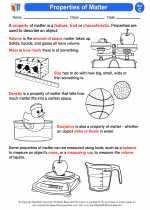 Properties of Matter
Properties of Matter  Worksheet/Answer key
Worksheet/Answer key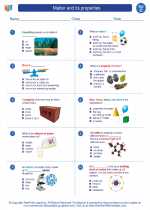 Matter and its properties
Matter and its properties  Worksheet/Answer key
Worksheet/Answer key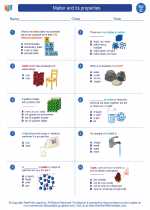 Matter and its properties
Matter and its properties  Worksheet/Answer key
Worksheet/Answer key Matter and its properties
Matter and its properties  Worksheet/Answer key
Worksheet/Answer key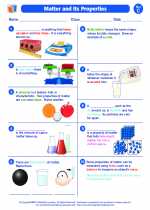 Matter and its properties
Matter and its properties  Worksheet/Answer key
Worksheet/Answer key Fact Finding
Fact Finding  Vocabulary/Answer key
Vocabulary/Answer key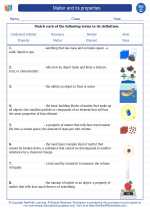 Matter and its properties
Matter and its properties  Vocabulary/Answer key
Vocabulary/Answer key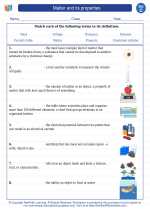 Matter and its properties
Matter and its properties 

 Activity Lesson
Activity Lesson
 Worksheet/Answer key
Worksheet/Answer key
 Worksheet/Answer key
Worksheet/Answer key
 Worksheet/Answer key
Worksheet/Answer key
 Worksheet/Answer key
Worksheet/Answer key
 Worksheet/Answer key
Worksheet/Answer key
 Vocabulary/Answer key
Vocabulary/Answer key
 Vocabulary/Answer key
Vocabulary/Answer key

The resources above cover the following skills:
PHYSICAL SCIENCE
Motion and Stability: Forces and Interactions
Explore objects that can be manipulated in order to determine cause-and-effect relationships (e.g., distance between objects affecting strength of a force, orientation of magnets affecting direction of a magnetic force) of electric interactions between two objects not in contact with one another (e.g., force on hair from an electrically charged balloon, electrical forces between a charged rod and pieces of paper) or magnetic interactions between two objects not in contact with one another (e.g., force between two permanent magnets or between an electromagnet and steel paperclips, force exerted by one magnet versus the force exerted by two magnets).
Apply scientific ideas about magnets to solve a problem through an engineering design project (e.g., constructing a latch to keep a door shut, creating a device to keep two moving objects from touching each other such as a maglev system).